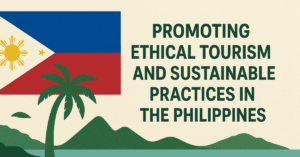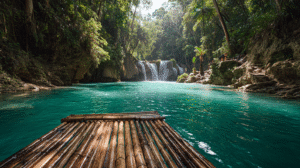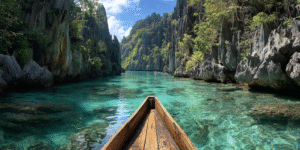The Cool Mountain Escape You Didn’t Know You Needed
Did you know that Baguio, perched 1,540 meters (5,050 feet) above sea level, was designed by American architects over a century ago as a hill station and health resort? This historical fact is the key to understanding its unique blend of winding roads, pine-scented air, and a layout that feels distinct from any other city in the Philippines. While many come to escape the lowland heat, a rewarding trip here goes beyond simply enjoying the cool breeze. Knowing what to do in Baguio means embracing its layered identity—from its green parks to its vibrant indigenous culture.
Start your journey at the city’s heart, Burnham Park. While it can get busy, a weekday morning visit reveals its intended charm. Rent a swan boat on the lagoon (from ₱250, or about $4.50, for 30 minutes) or lease a bicycle to circle the park. It’s a classic experience for a reason. For a more expansive dose of nature, head to Camp John Hay. This former American military rest and recreation facility feels like a different world. Walk the Yellow Trail under a canopy of soaring pine trees or simply lay a blanket on the grass at the Historical Core. The air here is crisper, and the scent of pine is a genuine form of aromatherapy.
Art and Soul of the Cordilleras
To truly connect with the region, you must explore its artistic soul. A 30-minute taxi ride from the city center (around ₱200-₱250, or $3.50-$4.50) will take you to the BenCab Museum. Home to the works of National Artist Benedicto Cabrera, the museum is a world-class space showcasing contemporary Filipino art alongside a breathtaking collection of Cordilleran artifacts. The museum’s design, which cascades down a mountainside, is as much a masterpiece as the art within. Expect an entrance fee of around ₱200 ($3.50). Another vital cultural stop is the Tam-Awan Village, which offers a more rustic, hands-on experience. Here, traditional Ifugao and Kalinga huts have been reconstructed to create a living museum, giving you a tangible sense of the region’s architectural heritage.
A Taste of the Highlands
One of the most authentic things to do in Baguio is to dive into its food scene, and that starts at the Baguio City Public Market. This is where you’ll find the freshest produce, from the famous strawberries (best from November to May) to bundles of freshly picked vegetables. It’s also the best place to buy local coffee beans, pure honey, and the ubiquitous walis tambo (soft broom). For a cooked meal, venture beyond the tourist-centric restaurants. Ask a local for their favorite spot for Cordilleran food to try dishes like pinikpikan. For something less adventurous but equally beloved, visit Café by the Ruins for its hearty breads and signature coffee. And don’t forget to explore the night market along Harrison Road, known for its endless array of ukay-ukay (thrifted clothing) and street food.
For the Adventurous Spirit
While Baguio is known for relaxation, it also offers a dose of adrenaline. Inside Camp John Hay, Treetop Adventure provides ziplines, canopy rides, and trekking opportunities that give you a bird’s-eye view of the stunning pine forests. If you’re up for a short trip just outside the city, the Colors of StoBoSa (Valley of Colors) in La Trinidad is a must-see. These hillside homes, painted to form a giant, cohesive mural, are a vibrant testament to community art. It’s a fantastic photo opportunity and can be easily combined with a visit to the nearby strawberry fields, offering a fuller picture of the area’s attractions.
Beyond the Main Attractions
This Baguio travel guide wouldn’t be complete without mentioning a few spots that fly under the radar. If you appreciate unique, sustainable architecture, find your way to the Ili-Likha Artists’ Wateringhole. Created by renowned filmmaker Kidlat Tahimik, this eclectic food and arts hub is built around a tree, using reclaimed materials to create a whimsical, multi-level space. It’s a testament to the city’s creative undercurrent. Another tip for avoiding crowds at famous tourist attractions in Baguio like Mines View Park is to go early on a weekday. While there, skip the biggest crowds and head straight to the nearby Good Shepherd Convent to purchase their legendary ube jam and other preserves; your purchase supports scholarships for local students.
Traveler’s Notebook
- Getting Here: The most common way is a 4- to 6-hour bus ride from Manila. Premium point-to-point services like JoyBus or Victory Liner Deluxe offer comfortable, non-stop trips.
- Getting Around: Taxis are plentiful and metered. For popular routes, jeepneys are an inexpensive and authentic option. Ride-sharing apps work but can have limited drivers during peak hours. Be prepared for traffic, especially on weekends and holidays.
- When to Go: The dry season, from November to May, offers the best weather. February is Panagbenga (Flower Festival) month—vibrant and festive, but also the most crowded time of year. The rainy season runs from June to October.
- What to Pack: Layers are essential. Pack light sweaters, a good jacket, and comfortable walking shoes. The weather can shift from sunny to chilly in an instant.
Baguio is more than just a list of places to see; it’s a feeling. It’s the crisp mountain air, the scent of pine needles on a forest floor, and the warmth of a coffee cup on a cool evening. It’s a city that balances its colonial past with a vibrant, forward-looking indigenous culture. So, are you ready to discover its many layers?




